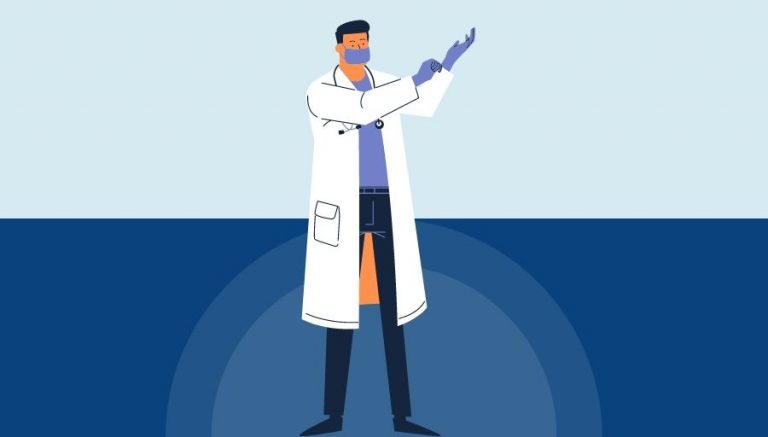How To Use CPT Code 87502
CPT 87502 involves the detection of multiple types or subtypes of influenza virus through nucleic acid detection using multiplex amplified probe technique and possibly multiplex reverse transcription. This article will cover the description, procedure, qualifying circumstances, appropriate usage, documentation requirements, billing guidelines, historical information, similar codes, and examples of CPT code 87502.
1. What is CPT 87502?
CPT 87502 is a medical code used to report the laboratory procedure for detecting multiple types or subtypes of influenza virus through nucleic acid detection using multiplex amplified probe technique and possibly multiplex reverse transcription. This code is specifically used for the first two types or subtypes detected in the test.
2. 87502 CPT code description
The official description of CPT code 87502 is: “Infectious agent detection by nucleic acid (DNA or RNA); influenza virus, for multiple types or sub-types, includes multiplex reverse transcription, when performed, and multiplex amplified probe technique, first 2 types or sub-types.”
3. Procedure
The 87502 procedure involves the following steps:
- Collection of a patient’s sample, typically a nasopharyngeal swab or other respiratory specimen.
- Extraction of nucleic acids (DNA or RNA) from the sample.
- Amplification of the target nucleic acids using multiplex amplified probe technique, which may include polymerase chain reaction (PCR).
- Possible use of multiplex reverse transcription to convert RNA into DNA, if necessary.
- Detection and identification of multiple types or subtypes of influenza virus present in the sample.
- Quantification of the number of microorganisms present, allowing for assessment of treatment response.
4. Qualifying circumstances
Patients eligible to receive CPT code 87502 services are those who present with symptoms suggestive of influenza infection or those who have been exposed to individuals with confirmed or suspected influenza. This test may also be used for patients with weakened immune systems, such as the elderly, infants, or individuals with chronic medical conditions, as they are at higher risk for complications from influenza.
5. When to use CPT code 87502
It is appropriate to bill the 87502 CPT code when a healthcare provider orders a laboratory test to detect the presence of multiple types or subtypes of influenza virus in a patient’s sample. This code should be used for the first two types or subtypes detected in the test. The test results can help guide treatment decisions and assess the patient’s response to treatment.
6. Documentation requirements
To support a claim for CPT 87502, the following information should be documented:
- Patient’s demographic information, including name, date of birth, and medical record number.
- Date and time of sample collection.
- Type of sample collected (e.g., nasopharyngeal swab, bronchoalveolar lavage).
- Indication for the test, such as symptoms suggestive of influenza infection or exposure to individuals with confirmed or suspected influenza.
- Results of the test, including the specific types or subtypes of influenza virus detected.
- Interpretation of the test results by a qualified healthcare professional.
7. Billing guidelines
When billing for CPT code 87502, it is essential to follow the appropriate billing guidelines and rules. Ensure that the documentation supports the medical necessity of the test and that the patient meets the qualifying circumstances for the service. Additionally, be aware of any payer-specific requirements or policies related to billing for this code.
8. Historical information
CPT 87502 was added to the Current Procedural Terminology system on January 1, 2011. Since then, there have been several updates to the code description, with the most recent change occurring on January 1, 2016.
9. Similar codes to CPT 87502
Five similar codes to CPT 87502 and how they differentiate are:
- CPT 87501: Used for the detection of a single type or subtype of influenza virus through nucleic acid detection, including amplified probe technique and possibly reverse transcription.
- +87503: Used for each additional influenza virus type or subtype beyond the first two types or subtypes detected in the test, in conjunction with CPT 87502.
- CPT 87497: Used for the detection of respiratory syncytial virus (RSV) through nucleic acid detection, including amplified probe technique and possibly reverse transcription.
- CPT 87498: Used for the detection of multiple types or subtypes of RSV through nucleic acid detection, including multiplex reverse transcription and multiplex amplified probe technique.
- CPT 87500: Used for the detection of hepatitis C virus through nucleic acid detection, including amplified probe technique and possibly reverse transcription.
10. Examples
Here are 10 detailed examples of CPT code 87502 procedures:
- A 65-year-old patient with chronic obstructive pulmonary disease (COPD) presents with fever, cough, and shortness of breath. The healthcare provider orders a test to detect multiple types or subtypes of influenza virus. The test detects two subtypes of influenza A virus.
- A 30-year-old pregnant woman presents with flu-like symptoms and reports recent exposure to a coworker with confirmed influenza. The test detects one subtype of influenza A virus and one subtype of influenza B virus.
- An infant with a high fever and respiratory distress is tested for multiple types or subtypes of influenza virus. The test detects two subtypes of influenza B virus.
- A healthcare worker with a fever, cough, and body aches is tested for multiple types or subtypes of influenza virus due to potential exposure to patients with influenza. The test detects one subtype of influenza A virus and one subtype of influenza B virus.
- An elderly patient with a history of heart failure presents with flu-like symptoms. The healthcare provider orders a test to detect multiple types or subtypes of influenza virus. The test detects two subtypes of influenza A virus.
- A patient with a compromised immune system due to cancer treatment presents with fever and respiratory symptoms. The test detects one subtype of influenza A virus and one subtype of influenza B virus.
- A patient with a history of asthma presents with worsening respiratory symptoms and a high fever. The healthcare provider orders a test to detect multiple types or subtypes of influenza virus. The test detects two subtypes of influenza B virus.
- A patient with diabetes presents with flu-like symptoms and reports recent exposure to a family member with confirmed influenza. The test detects one subtype of influenza A virus and one subtype of influenza B virus.
- A patient with a history of kidney transplant presents with fever, cough, and body aches. The healthcare provider orders a test to detect multiple types or subtypes of influenza virus. The test detects two subtypes of influenza A virus.
- A patient with a history of rheumatoid arthritis on immunosuppressive therapy presents with flu-like symptoms. The test detects one subtype of influenza A virus and one subtype of influenza B virus.



